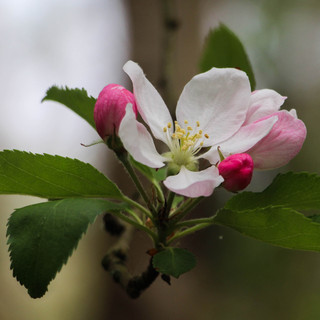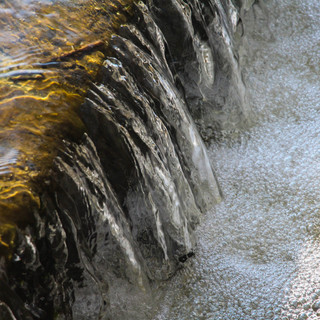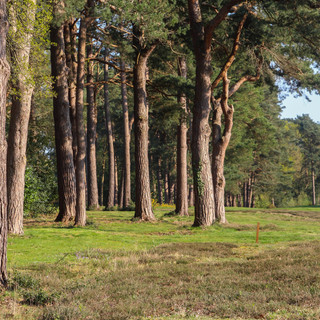Beauty on your doorstep
- Mal Grey
- Apr 18, 2020
- 7 min read
Updated: Jan 11, 2021

Its a difficult time for everybody, especially so for those on the front line, the key workers who are caring for people so heroically, and those supporting our economy and helping us to get by. Others are financially worried, and the future is unknown. Compared with this, I am lucky, and able to work from home. Yet living alone in a small flat is not without its challenges and I need a release from being cooped up in one small space for 23 hours a day.
For me, that release comes from my daily exercise. Though I live in Woking, in suburban Surrey, my walks from home have become a miniature voyage of discovery, looking for little pockets of the natural world, just a mile or so from home. Some of these I'd visited before, some I knew about but hadn't bothered with as there were more interesting-looking places a short drive away, and a few were entirely unknown.
After the first week or so, I started talking my DSLR camera with me. My "Outside Photos of the Day" have become a bit of a ritual for me, helping me to take my mind off everything else, and giving me something to focus on. Literally.
I might live in a commuter town, but I have seen so many things this last month, as the world has remarkably quickly come out of winter and moved into joyous spring. Never before have I been able to watch the seasons change in so much detail, to see trees that the day before were merely covered in buds, sprouting leaves and blossom. Flowers have appeared from nowhere, and the many creatures that live just yards from humanity have become frantically active.
Watching the wildlife has become a key part of what is keeping me (fairly) sane. I have seen species I did not know lived so close, watched birds building nests, grass snakes waking from their winter rest and had glimpses of the animals that live almost alongside us. It is the birds, though, that have been the most dominant. I have lost count of how many species I have seen, and I have even, belatedly, started to recognise some bird song.
Off the top of my head, here's a list of local birds I've seen. Blue tits, house sparrows, blackbirds, great tits, long tailed tits, nuthatches, treecreepers, goldfinches, chaffinches, chiffchaffs, goldcrests, song thrushes, robins, red kites, buzzards, kestrels, sparrowhawks, green woodpeckers, greater spotted woodpeckers, rooks, crows, jackdaws, cormorants, great crested grebes, mute swans, Canada geese, Egyptian geese, greylags, mallards, mandarin ducks, moorhens, coots, gulls. Well over thirty species. On top of this have been the grass snakes, roe deer, vole and a fox's bum. I have no idea how many insects I've seen, but the butterflies have been lovely, peacocks, brimstones, specked woods, orange tips, and the bees a welcome sight.
I have learnt to recognise several new species of plants, small and large, using apps and websites to identify them, another way to keep the mind occupied. I have learnt to walk more slowly and quietly, and to pause to just look and listen. I have learnt that whilst much wildlife is wary of man, it will merely keep its distance and that if you sit and watch, life will carry on around you.
Perhaps the most special moments have been with the kestrels. A local golf course has kindly allowed people to wander freely across its grounds, as long as we act respectfully and keep off the greens. Here is a more open landscape, a welcome change from the pockets of woodland and small enclosed heaths that make up most of my local green spaces. On its fringes, tall Scots Pines, one of my favourite trees, remind me of wilder places in the north lands. On one of my walks, I spotted a shape perched on a lower branch of a tree. A kestrel. Despite people walking past on a track, it seemed calm and undisturbed. On my next visit, I walked slowly and quietly into the woodlands a little up from where I'd seen it. Standing for a few minutes, I couldn't spot anything, but then there was a brief movement and a bird moved a few feet from one branch to another, high in a pine. Close enough that I could see, from the colour of the tail, that it was a female kestrel, looking straight down at me. I stood for a while, as she became bored of me and started preening. At one point she moved trees, flying around me to one the same distance away. A little later, I saw the male, perched in a different tree.

I have been back to the spot a few times. Sometimes I see a kestrel, nearly always the female, from a distance. Sometimes I don't see them at all, but when I move to leave, I glance in a different direction to see a pair of eyes fixed on mine. I don't go too close, yet they are clearly aware of my presence, watching me but carrying on with their preening. I am conscious that if they start nesting there I will need to keep further away, though there are many people oblivious to their existence just 50 feet from a large path so I think they're pretty used to humans.
As mentioned, photography is also an important part of my walks. Trying to come up with new angles, and interesting shots is a great way of keeping the mind, and the eye, active. Many are close up or detail shots, as the "landscape" photography opportunities are not so good round here, as there are always buildings nearby and little if any view. All the photos from this blog are from these walks.
I thought I'd end with some thoughts that might inspire others on their own exercise walks. A few hints and tips as to what works for me.
Planning
Spending time looking at the Ordnance Survey maps of your area, and Satellite views, both can help identify the best walk opportunities and extends the time spent enjoying your exercise a little. Work out some routes and just go and explore. I have OS Maps on my phone too.
Timing
I split my day in two, going out late afternoons/early evening. It is probably quietest in the early morning, but I can't then face the whole of the rest of the day sat in one room until bedtime. Its a little quieter in the evening than the middle of the day I find.
Vary it
I basically have 2 directions to go, in which there is a reasonable amount of green space. I alternate these areas, but I also vary the exact route regularly. The next time I will reverse the route too, it brings a different perspective
Explore
Leave the path, if the terrain allows it, and just walk a few yards into woodlands or heathland. You will find yourself closer to nature and definitely socially distant! If all you have is a small local park, explore the quietest corners, go into pockets of woodland. If all you have is streets to walk, look at the trees, look into gardens, look at the skies.
Walk slow, walk quiet
You never know what's around the next corner, and you will see more wildlife. Place your feet carefully, with practice you will be surprised how quiet you can be.
Take binoculars
If you own a pair they will help you see much more. And if you do own a pair, why wouldn't you carry them?
Look down
There are so many little details you might miss normally, insects, plants.
Look up
Especially in woodlands, life happens up in the trees.
Stop
Yes, these walks are about exercise and keeping healthy, but I see no issue with stopping for a short time and just listening and looking. Waiting for a couple of minutes in the middle of a woodland will let you see so much more life.
Listen
Birdsong in particular is a magical sound, but the tap-a-tap-tap of a woodpecker might lead your eyes to spot him, and the alarm call of a bird might tell you a red kite is flying overhead.
Take pictures
Even if its not your thing normally, thinking about capturing your walks helps you to think about your surroundings, thus immersing yourself in them a little more. For my first 10 days or so I just took the phone and used its camera, an expensive set up is not necessary but does give more options. Keep your camera to hand; if the weather is good I literally carry mine in my hand most of the time; you often need to be quick when capturing wildlife.
Watch, don't just spot
When you do see something, watch what its doing, give it time. Just seeing it is one thing, but much pleasure can be found in watching wildlife going about its day-to-day business. This might be the rarer sight of a grass snake swimming along a canal, but it could simply be watching a blue tit feeding or loudly announcing its presence to all. Binoculars can make a real difference here, as they take you within range without disturbing wildlife.
Exercise
Of course, this is all about exercise too. I tend to walk fast to get out of the estates that surround my home, then slow down once I am in the woods or on the common. It gets me away from people faster, is better exercise, but then allows more time to spend with nature.
Share
Finally, share what you've found with others. Write about it, post your photos. My friends and family tell me that seeing my "Outdoor Photos of the Day" is something they look forward to seeing, and not everybody is lucky enough to get out into nature every day.
Be sensible
Of course, I should end with a reminder that we must use common sense here. Follow all social distancing guidelines, don't take risks, and don't take the mickey. If you do this, I see no reason why we shouldn't balance the difficulty of living through strange times with a little light and joy from being with nature.
This has been a voyage of discovery, and the delight I have found in my local nature makes a huge difference in coping with difficult times and an uncertain future. I encourage everybody to try it if they possibly can. Go outside with open eyes; the world is waiting to greet you.








































































































